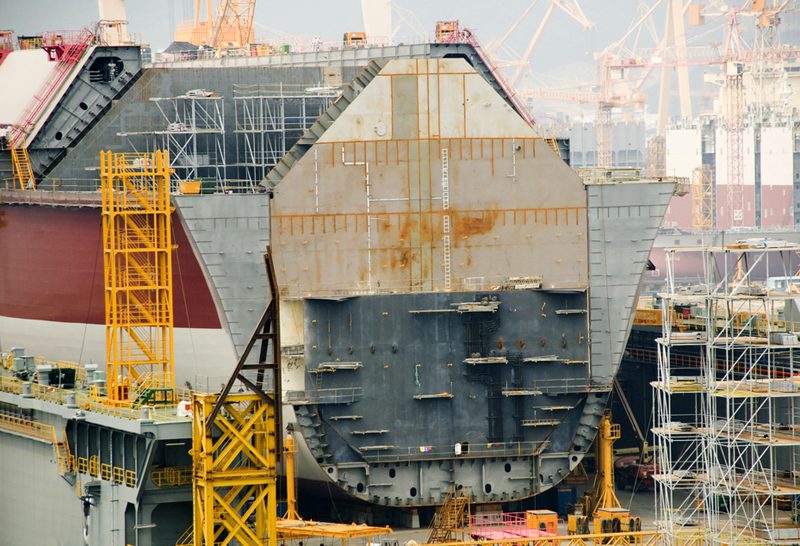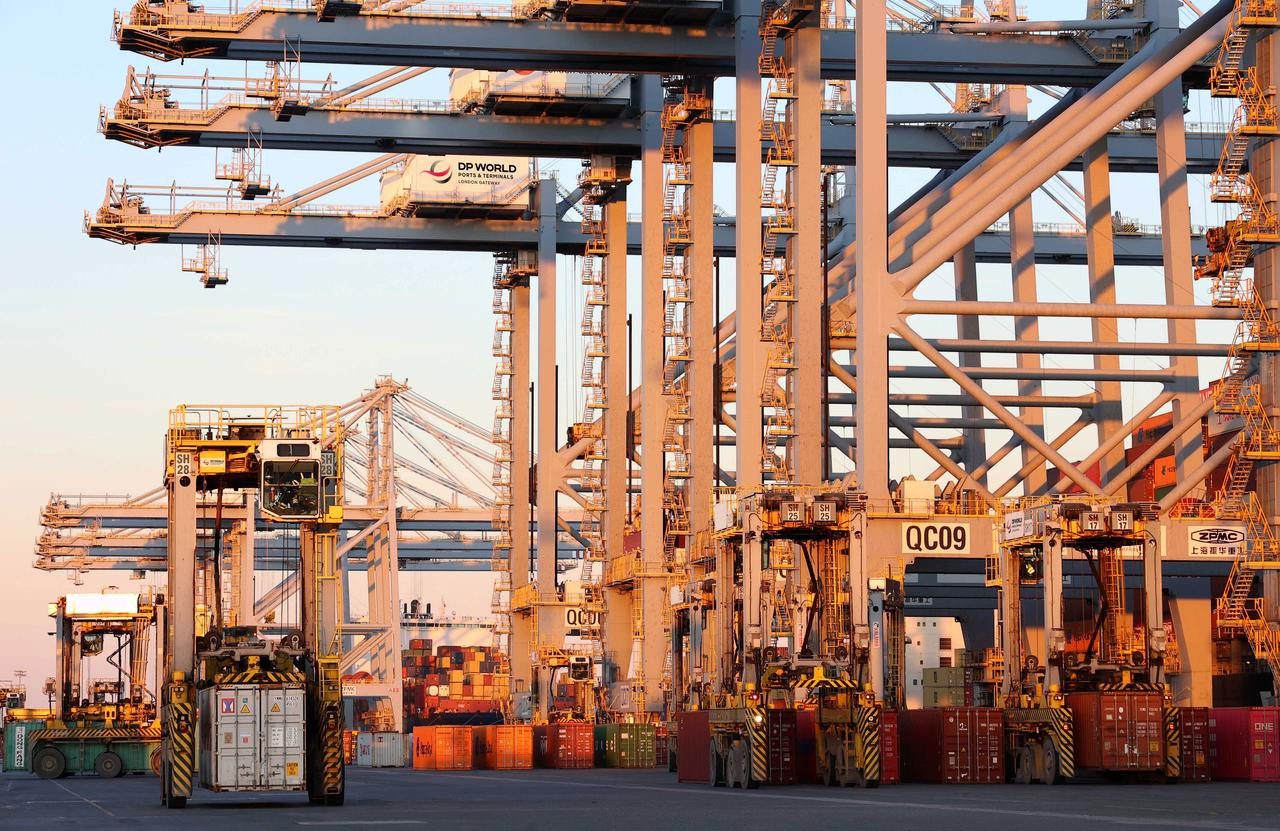(Bloomberg) — The biggest shutdown of nuclear power in history will spur record demand for liquefied natural gas and the most profit ever for Golar LNG Ltd. and other companies shipping the fuel across oceans.
Japan, once the third-biggest nuclear generator, said Sept. 14 it would close all reactors within three decades after last year’s meltdown at Fukushima. The nation, already the largest LNG buyer, will probably need 19 percent more by 2020, according to Oslo-based Arctic Securities ASA. The fleet may need to more than double by then, Pareto Securities AS estimates. Shares of Golar will advance 28 percent in 12 months, based on the average of 12 analyst estimates compiled by Bloomberg.
Just two of Japan’s 50 nuclear plants restarted since the earthquake and tsunami in March 2011, eliminating almost 30 percent of the country’s power supply. While global LNG output has never been higher, the tanker fleet has failed to keep pace, driving shipping rates to a record. With Japan now planning to phase out its reactors entirely, analysts anticipate rising profit for Golar, Monte Carlo-based GasLog Ltd. and Hoegh LNG Holdings Ltd. through at least 2015.
“This finalizes a long-term catalyst that we’ve already seen, but there was a question whether it would maintain itself,” said Michael Webber, an analyst at Wells Fargo Securities LLC in New York whose recommendations on the shares of shipping companies returned 18 percent in the past year. “A full-on shutdown makes it official that this is going to be additive to shipping demand.”
John Fredriksen
Golar, based in Hamilton, Bermuda, will report an almost fourfold increase in net income to $165.4 million for this year, based on the mean of 14 analyst estimates compiled by Bloomberg. Profit will reach $455 million in 2015, the predictions show. Shares of the company, led by billionaire John Fredriksen, rose 21 percent to $38.35 from this year’s low on May 9 and will increase to $49.06 in 12 months, according to the forecasts.
Rates for modern LNG carriers will average about $150,000 a day this year, 52 percent more than in 2011, according to the median of seven analyst estimates. While earnings are projected to drop to $142,000 in 2013 as new ships join the fleet, that’s still more than the $80,200 that Pareto estimates owners need to break even. Golar’s profit will keep expanding because it has more new tankers on order than any other company.
Prime Minister Yoshihiko Noda made his proposal to close all reactors by the end of the 2030s in response to mounting public pressure. Japan had ranked third in nuclear power behind the U.S. and France. The Cabinet stopped short of fully endorsing the policy on Sept. 19 and Keidanren, the country’s largest business lobby, said the plan will make it difficult to retain the technology and workers to maintain nuclear safety. That may imply a smaller-than-expected gain in LNG demand.
Idaho Plant
Germany, the world’s sixth-biggest nuclear producer, said in May 2011 it would close all its plants by 2022, following the Fukushima disaster. A reactor first generated power in Idaho in December 1951 and there are now 433 sites globally that provide about 14 percent of all electricity, according to the World Nuclear Association. A further 548 are under construction, in planning stages or proposed to be built by 2030, its data show.
The anticipated expansion in LNG cargoes also may stall because of delays in building new liquefaction plants. A project in Angola that was supposed to start exporting in the first quarter won’t do so until the final three months of the year, three people with knowledge of the matter said this month. Chevron Corp. is the biggest investor in the plant.
Nuclear Power
Tanker rates fell about 10 percent since June as Asian LNG costs retreated. The surge in Japanese demand after its nuclear plants were shut drove regional LNG prices to a premium against the rest of the world, attracting more cargoes. In some cases that added 9,800 miles to voyages, tying up vessels and boosting rates. The increased supply helped lower prices, making it less profitable to divert shipments.
Voyage lengths may also contract because of increasing supply in Asia. Australia’s annual production capacity will increase to 85 million metric tons by 2020 from 22 million now, according to Morgan Stanley. The nation will overtake Qatar as the biggest exporter by the end of this decade, the Paris-based International Energy Agency said in a July report.
Global LNG production capacity will expand 2.8 percent to 255 million tons this year and another 4.7 percent in 2013, Morgan Stanley estimates. Output may reach 398 million tons in 2020, according to Fotis Giannakoulis, an analyst at the bank in New York. Japan will consume as much as 105 million tons in 2020, from 86 million tons now, Arctic Securities says. That’s as much as 15 million tons more than projected before the decision to phase out all nuclear power.
Marine Engineering
Ship owners will need to build as many as 370 new vessels by the end of the decade to accommodate the extra demand, in addition to the 79 carriers already ordered, Pareto predicts. Existing contracts at ship yards are equal to 21 percent of existing capacity, according to data from IHS Inc., an Englewood, Colorado-based research company. The fleet expanded 55 percent in the past five years to 356 vessels.
The biggest builders are Samsung Heavy Industries Co., Daewoo Shipbuilding & Marine Engineering Co. and Hyundai Heavy Industries Co., all based in South Korea, according to IHS. A new vessel costs $201 million, compared with $95 million for the largest oil tankers and $46.5 million for Capesize vessels that haul iron ore, according to London-based Clarkson Plc, the world’s biggest shipbroker.
Baltic Dry
LNG tankers cost more because they need more equipment to manage their cargo. The 900-foot-long ships have insulated tanks to carry gas cooled to minus 160 degrees Celsius (minus 256 degrees Fahrenheit) so that it occupies 600 times less space. One cargo expands to 95 million cubic meters (3.4 billion cubic feet), equal to about 25 percent of peak daily winter demand in the U.K. The first shipment sailed to the U.K. from Louisiana in 1959, according to ConocoPhillips, part-owner of the vessel.
The bullish outlook for LNG shipping compares with a slump across most of the rest of the industry, which is enduring a glut of capacity. The Baltic Dry Index, a measure of the cost of hauling iron ore and coal, plunged 52 percent since the start of January. Rates for the largest oil tankers tumbled 77 percent, Clarkson estimates. Frontline Ltd., the biggest operator of supertankers, probably will report net losses this year and next, the mean of 15 analyst estimates shows.
That contrasts with GasLog, the operator of 22 LNG tankers, which will report net income of $6.44 million for 2012 and $41.4 million for 2013, according to the mean of seven predictions. Its shares jumped 28 percent since the start of June. Hoegh LNG, which operates eight vessels, will make $3.34 million this year and $18.1 million in 2013, the mean of eight estimates show. Its shares gained 11 percent from the 2012 low in May.
“The signal to the market is clear: ‘Prepare for Japan shifting to more fossil fuel in the near-term,”’ said Erik Nikolai Stavseth, an analyst at Arctic Securities in Oslo whose recommendations on shipping stocks returned 25 percent in the past year. “The increased volumes are clearly positive for LNG shipping and will require a significant amount of LNG vessels.”
– Isaac Arnsdorf, Copyright 2012 Bloomberg

 Join The Club
Join The Club











